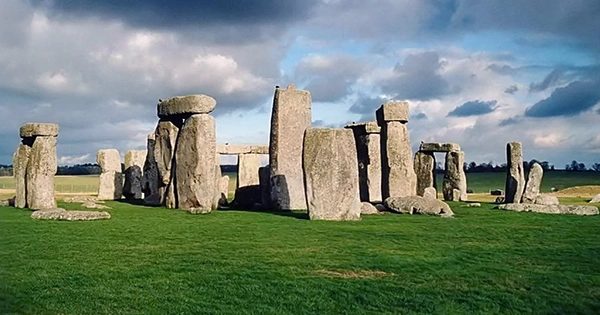How did Stonehenge’s ancient occupants make use of this iconic prehistoric monument? Recent research adds to the evidence that it was a calendar, although a unique one — a 365.25-day solar calendar akin to others that have been discovered in the Eastern Mediterranean, particularly Egypt. Although the concept of the circle of stones as a calendar is not new, there has been little consensus on how it works. To explain the arrangement of the Sarsen, the scientific name for the standing stones, a variety of solar and lunar calendars have been offered. The stones are aligned with the summer solstice dawn, therefore the solar link.
According to the study, the Sarsen circle was made up of 30 stones, each symbolizing a day of the month, separated into “weeks” of ten days and indicated by anomalous stones. 360 days are equal to 12 months of 30 days. The five constructions of the Trilithon Horseshoe, which are prominently shown in the monument’s center, were used to commemorate the final five days of a solar year. Every four years, one extra day might be added because of the four-station stones situated outdoors.
The purpose of this calendar would not have been to notify farmers when to plant their seeds or harvest their crops, or even to declare “today is Wednesday, March 2, 2022 CE.” The purpose of such a monumental calendar would be to commemorate those people’s key events and festivals. “The calendar exists to ensure that events occur on the days set by the gods. Or, to put it another way, they’re there while the deity is waiting to be appeased,” author and University of Bournemouth professor Timothy Darvill told IFLScience.
“It’s the interaction between the universe and ordinary people’s day-to-day lives, which is why a calendar is such an important component of it.” And the ones in charge of time are also in charge of the gods.” A 365.25-day solar calendar is quite known, and it raises the issue of where this notion comes from, provided the interpretation is right. It was introduced to Britain, according to Darvill, when people traveled throughout Europe.
“At the same time that Stonehenge is being created, we can observe that pattern in other regions of the old world.” Professor Darvill noted, “It’s generally referred to as the Egyptian Civic calendar, although it was utilized well beyond Egypt.” “Of course, that calendar provided the foundation for many of the current calendars that we now use.” Solar religions flourished over Europe at the time Stonehenge was built, beginning in the Egyptian cult of Ra. Ideas spread thanks to Mediterranean migratory civilizations, and something like a calendar may have reached it all the way to Britain.
Ancient DNA has revealed that individuals did travel about in the previous 20 years. “Stonehenge is a complex and long-lived monument.” It’s tough to decipher. And it’s fantastic that there’s so much work being done in that area right now,” Professor Darvill remarked. “It’s like a huge medieval cathedral or a huge religious temple… These constructions, these buildings, have a life of their own, and they alter throughout time… But, at the end of the day, it’s not the structure that matters, it’s the people who live there… They erected a memorial in order to accomplish something with it.”
















